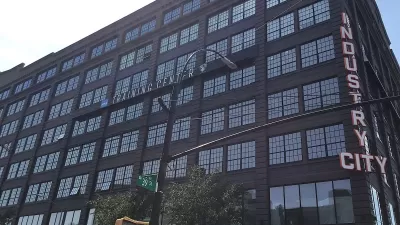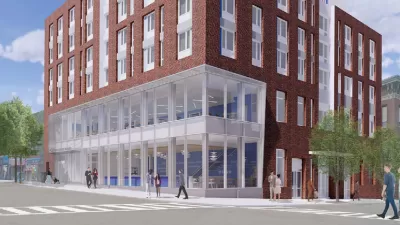Pedestrian malls, a common urban design goal of the 1960s and 1970s have so fallen out of fashion that failed examples from history are cited as boogeyman like "bridges to nowhere" and "big digs."

"Once upon a time in the 1960s and 1970s, urban leaders pushed cars out of downtown. Why is it so hard to do that now?"
That's the provocative discussion posed by Curbed design critic Alexandra Lange to inspire a history of pedestrian malls, starting with an origin story from the imagination of Victor Gruen, through several decades of failed attempts at attracting suburban shoppers back to downtown, to the recent history of the planning and design of urban pedestrian spaces, informed by lessons from the failures of the past and built in smaller numbers around the country.
"The pedestrian mall was an urban phenomenon, one with a clear boom-and-bust cycle," writes Lange. "From 1959 through the early 1980s, more than 200 American cities closed blocks of their downtowns to car traffic. By 2000, fewer than 24 of those original malls remained."
Of those pedestrian malls, Lange examines the example of Fulton Mall in Brooklyn for lessons in what makes urban pedestrian malls successful:
Fulton Mall’s success offers clues as to why only two dozen of 200 pedestrian malls remain from the boom a half century ago. The future of the pedestrian mall is not in trying to save downtown merchants by bringing new shoppers in, but in improving the experience for the shoppers who are already there.
As always with urban design, there are multiple social, economic, and design factors at play in the success of shopping districts, which is why raising pedestrian malls as a boogeyman doesn’t make sense in the first place. But three factors stand out: foot traffic, anything-but-car access, and amenities beyond retail.
For examples of recently renovated, still functioning examples that have done a better job of embedding those lessons, Lange mentions the 16th Street Mall in Denver and the Nicollet Mall in Minneapolis. There are more pedestrian mall projects on the way in New York City too, like Willoughby Square Park and a new public realm plan for Downtown Brooklyn, which includes the Fulton Mall.
FULL STORY: Who’s afraid of the pedestrian mall?

Trump Administration Could Effectively End Housing Voucher Program
Federal officials are eyeing major cuts to the Section 8 program that helps millions of low-income households pay rent.

Planetizen Federal Action Tracker
A weekly monitor of how Trump’s orders and actions are impacting planners and planning in America.

Ken Jennings Launches Transit Web Series
The Jeopardy champ wants you to ride public transit.

Opinion: Transit Agencies Must View Service Cuts as Last Resort
Reducing service could cripple transit systems by pushing more riders to consider car ownership, making future recovery even less certain.

‘Smart Surfaces’ Policy Guide Offers Advice for Building and Maintaining Urban Tree Canopies
Healthy, robust tree canopies can reduce the impacts of extreme heat and improve air quality.

New Jersey Lawsuit Targets Rent-Setting Algorithms
The state of New Jersey is taking legal action against landlords and companies that engage in what the state’s Attorney General alleges is illegal rent fixing.
Urban Design for Planners 1: Software Tools
This six-course series explores essential urban design concepts using open source software and equips planners with the tools they need to participate fully in the urban design process.
Planning for Universal Design
Learn the tools for implementing Universal Design in planning regulations.
Heyer Gruel & Associates PA
Ada County Highway District
Institute for Housing and Urban Development Studies (IHS)
City of Grandview
Harvard GSD Executive Education
Toledo-Lucas County Plan Commissions
Salt Lake City
NYU Wagner Graduate School of Public Service




























